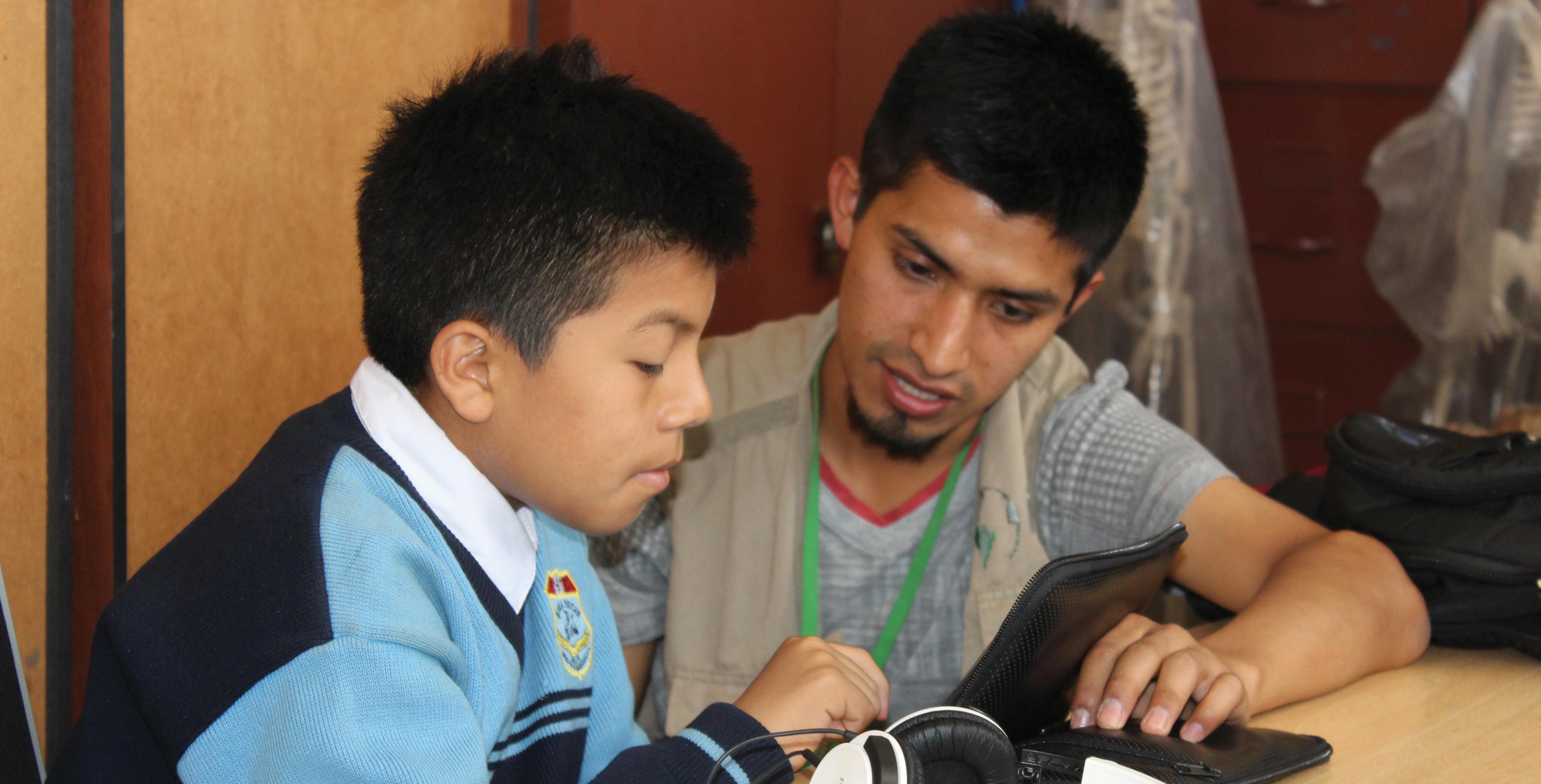Keeping Kids in School with Relevant Information in Peru
Abstract
In Peru, IPA and J-PAL worked with researchers and the Ministry of Education to evaluate at scale two low-cost ways of providing relevant information to help students and their families make more informed decisions. Using a series of telenovela-style videos screened as part of the curriculum in schools, as well as through an interactive tablet app, the research project evaluated how information provided at different ages could shape human capital decisions. The study found that the programs were effective at changing educational plans and lowering dropout rates, while significant effects on child labor were mixed. In response to this evidence, the government decided in 2017 to scale up the telenovela-video information campaign to all public secondary schools in Peru with full class days.

The Challenge
In many countries, students drop out of school and enter the labor force as children at persistently high rates. One reason for this may be that students and their parents are making their educational decisions without the appropriate information. They may underestimate the long-term benefits of continuing their education. They may also not understand the differences in types of education tracks or fields of study. Importantly, they may not be aware of financial aid programs that would make continuing education feasible for them. This can lead to a series of mistaken decisions about questions like how long to stay in school, how hard to try, and what types of subjects to focus on. These mistakes may accumulate and compound over time, making it more likely for students to exit the education system with fewer applicable skills, reproducing poverty.
In Peru, high school dropout rates continue to be a significant problem. At the national level, 12 percent of children leave school before age 13, and 17 percent do not finish secondary school.
The Evidence
Through Minedulab, an innovation lab for education policy housed within the government of Peru, IPA worked with researchers to test two innovative information campaigns aimed at reducing school dropouts. One campaign featured a telenovela-style video series whose plot conveyed messages about the social value of education, real earnings information for different education levels and fields, and options for financing higher education. Another delivered similar messaging through a more intensive, tablet-based information campaign, built into an app-based survey which used infographics, interactive activities, and in-depth presentations to present information to students and parents.
Results find that parents and students alike underestimated the returns to education, and the delivery of accurate information corrected these beliefs. Additionally, the information provision policy implemented by the government at scale via videos affected human capital accumulation of students and seemed to help reduce school dropout rates in particular. In urban areas, the video series led to a decrease in the two-year dropout rate of 2 percentage points—equivalent to a decrease in dropout rates of 19 percent. The impact on child labor was mixed, with some groups such as women in urban areas lowering the amount of work provided at home.
Schools reported that they valued the intervention, with 95 percent of head teachers reporting a willingness to continue to participate in the campaign in future years. Additionally, the marginal cost of the video series campaign was less than US$ 0.05 per student, making it a low-cost program to implement.
Read more about the evaluation here and watch the below videos for student and parent testimonials and an overview of the evaluation.
The Impact
Based on these results and the low cost of the program, the Ministry of Education in Peru made the decision to scale up the telenovela video series by incorporating it into the Directorate for Secondary Education’s video tutoring curriculum. The video series is now shown in all secondary schools with a full class day, reaching 2,001 schools or approximately 500,000 students nationwide in the 2017-2018 school year. IPA is continuing to work with education directors in Peru to optimize delivery and expansion of the program.
Funding for this project was provided by the United States Department of Labor.
This material does not necessarily reflect the views or policies of the United States Department of Labor, nor does the mention of trade names, commercial products, or organizations imply endorsement by the United States Government.











